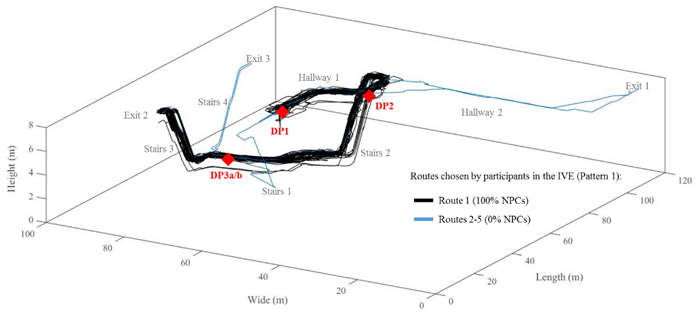Jing Lin, Runhe Zhu, Nan Li *, Burcin Becerik-Gerber
Advanced Engineering Informatics
Volume 43, January 2020, 101040
ABSTRACT
This study aimed to examine the influence of crowd flow on human evacuation behavior during building fire emergencies, when evacuees perceive high uncertainty in the environment and experience mental stress. Evacuation experiments were conducted in an immersive virtual metro station, in which each participant was presented with one of three different patterns of crowd flow and asked to complete an evacuation task. The patterns of crowd flow were represented by non-player characters that split differently at each wayfinding decision point in the metro station. The experiments were conducted in Beijing, Los Angeles and London. The results showed that uneven splits of crowd flow motivated participants under mental stress to follow the majority of the crowd. This influence of crowd flow was generally consistent over the course of evacuation, and such consistency could be reinforced by stronger directional information conveyed by the crowd flow as well as positive feedback from the outcomes of previous wayfinding decisions. The results also indicated that the influence of crowd flow was significant in all three cultures represented by the three cities, however, the impact of culture on how participants would respond to the directional information conveyed by the crowd flow was insignificant.
Keywords: Fire evacuation; Building emergency; Crowd flow; Herding; Immersive virtual reality; Culture
https://www.sciencedirect.com/science/article/pii/S1474034620300094

(a) Group A

(b) Group B

(c) Group C
Figure 1 Comparison of trajectories of participants across three study groups